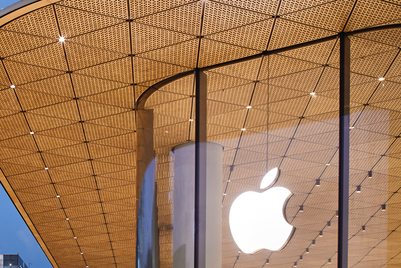At a time where experiential marketing is quickly becoming a given for brands, with it has come the rise of brand experience centres—where experiential elements are heightened, and the normalcy of brick-and-mortar operations are defied.
Take Apple’s flagship store in New York City. When global design agency Eight Inc was assigned by Steve Jobs over a decade ago to design an experiential store that would evoke emotional reactions in visitors, the result was a minimalistic ‘cube’ that was as much a brand experience centre as it was a retail store. It has since become a city icon, even among tourists.
“What you see are different types of touchpoints that people have in order to communicate what the brand is about,” says Eight Inc founder Tim Kobe. “Historically, the only way you would understand Apple before it had its retail programme was through third-party retailers, advertising, or other forms of communications.
“Brand experience centres are places for people to experience the values a company has in a way that showcases the different values in a framework that communicates the essential purpose of why a company exists. The purpose of brand experience centres goes beyond the functional brand attributes to include the aspirational ones.”
This model works because in most retail frameworks, “people buy things emotionally and justify it rationally”, according to Kobe.
“Experience is where you get a much deeper understanding. And with a deeper understanding, you get much more stickiness to the elements of the brand than you would if you simply had facts and figures. Why a company exists is something that you understand from feeling rather than a need to process,” he says.
Particularly in China, the O2O commerce landscape means that competition between brands in physical spaces is fiercer, forcing them to execute unique retail experiences. Take, for instance, the new interactive experience centre in Shanghai for cosmetics brand MAC, created by Wunderman Shanghai.
At the centre, visitors scan themselves in with WeChat and experiences include getting to sample 18 shades of lipstick in 30 seconds via a virtual mirror.
“Chinese consumers are still using traditional retail so a lot more brands are looking for ways to have that meaningful connection between the online and offline space. They also want to use the opportunity to connect with customers,” says longtime China agency leader Bryce Whitwam*. On engagement at the centre, he says “it’s been getting four times the traffic than a normal store would have” and that “sales have been off the charts”.
Meanwhile, the new flagship Vivo concept store in Shenzhen—conceptualised by Imagination China—is indicative of a need for one-on-one communications and a personalised physical retail experience. The immersive photography-oriented concept uses the brand’s camera technology to create 10 customer touchpoints to enable visitors to interact with the brand.
Sam McMorran, group creative director for Imagination China, says that unexpected ‘human touch’ moments are important, especially in China where customers are used to things being available on demand.
“Brands and agencies have to consider a China-dedicated approach in terms of design. When you are integrating [online and offline], badly designed journeys reduce effectiveness and cause frustration. It’s about connection, it’s about theatre,” he says.
He also brings up data collection and management as a benefit that brands need to leverage from physical centres.
“It’s really important to have a strategy about how you integrate all that data from the various touchpoints. The minute someone scans something through a QR code, we can begin to understand information like how many people are sharing. You can see very quickly which experiences are resonating with people,” he says. “Using this kind of value exchange, it allows you to adapt quickly so you’re maximising the opportunity for conversion.”
Brand experience centres also build brand communities, something than a regular bricks-and-mortar store might fail to do. Many of these spaces too—including the MAC and Vivo stores—have separate spaces for small events such as press launches, workshops, or KOL meet-and-greets.
“It’s quite a simple value exchange just offering a space where people can come and don’t feel obliged to pay and you’re offering fun, engaging things for them to do. It becomes a place for freeform expression. This helps to build a community and it amplifies very naturally,” says McMorran.
“Through this, if you can lead to an increase in social advocacy, more click-throughs, more content online and on WeChat, this will naturally lead to conversion.”With great experiences come great business outcomes, indeed.
* Whitwam was Greater China CEO of Wunderman at the time of the interview, but has since joined MRM McCann.






.jpg&h=500&w=750&q=100&v=20250320&c=0)











.jpg&h=100&w=150&q=100&v=20250320&c=1)







.jpg&h=334&w=500&q=100&v=20250320&c=1)



.png&h=334&w=500&q=100&v=20250320&c=1)

.png&h=334&w=500&q=100&v=20250320&c=1)

.png&h=334&w=500&q=100&v=20250320&c=1)

+(900+x+600+px)+(2).jpg&h=268&w=401&q=100&v=20250320&c=1)

.png&h=268&w=401&q=100&v=20250320&c=1)

.jpg&h=268&w=401&q=100&v=20250320&c=1)
.png&h=268&w=401&q=100&v=20250320&c=1)

